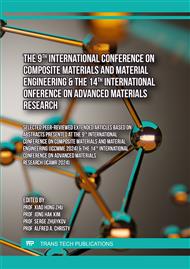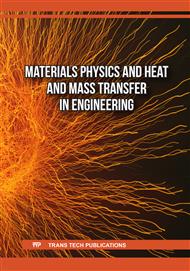p.27
p.41
p.47
p.57
p.63
p.69
p.77
p.85
p.91
Solid-State Synthesis and Characterization of LiNi0.75Co0.20Al0.05O2 Cathodes for Lithium-Ion Battery Applications
Abstract:
The increasing demand for electric vehicles and alternative energy sources results in high demand for energy storage, such as high-capacity rechargeable batteries. Ni-based ternary cathodes like lithium nickel cobalt aluminum oxide (NCA) have become promising due to their high energy density. In this study, a facile solid-state reaction pathway for the synthesis of LiNi0.75Co0.20Al0.05O2 cathode using metal oxide precursors was investigated. Thermal analysis using TGA-DTA showed the decomposition and mass loss of the calcined precursors and revealed an endothermic reaction at about 700°C, which can be attributed to Li2CO3 melting. XRD analysis reveals the creation of hexagonal NCA with an α-NaFeO2 r3m structure along a secondary LCO phase. However, resintering leads to a more thorough reaction, yielding hexagonal NCA with lattice parameters a = 2.863 Å and c = 14.192 Å. In addition, SEM-EDX analysis reveals irregularly shaped agglomerated morphology and relatively homogenous distribution of Ni, Co, and Al for the resintered samples.
Info:
Periodical:
Pages:
63-68
Citation:
Online since:
June 2024
Price:
Сopyright:
© 2024 Trans Tech Publications Ltd. All Rights Reserved
Share:
Citation:



